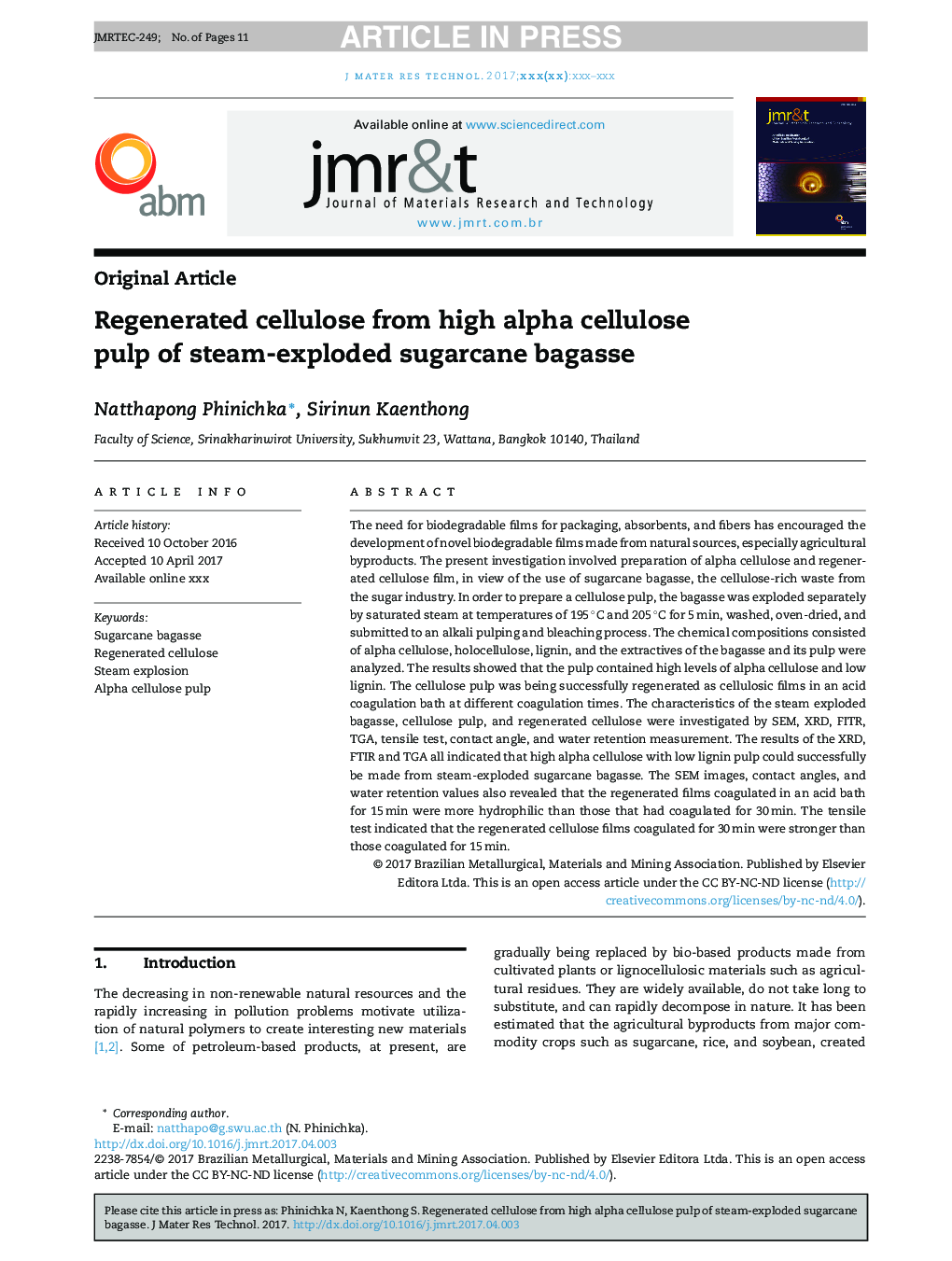| Article ID | Journal | Published Year | Pages | File Type |
|---|---|---|---|---|
| 7899306 | Journal of Materials Research and Technology | 2018 | 11 Pages |
Abstract
The need for biodegradable films for packaging, absorbents, and fibers has encouraged the development of novel biodegradable films made from natural sources, especially agricultural byproducts. The present investigation involved preparation of alpha cellulose and regenerated cellulose film, in view of the use of sugarcane bagasse, the cellulose-rich waste from the sugar industry. In order to prepare a cellulose pulp, the bagasse was exploded separately by saturated steam at temperatures of 195 °C and 205 °C for 5 min, washed, oven-dried, and submitted to an alkali pulping and bleaching process. The chemical compositions consisted of alpha cellulose, holocellulose, lignin, and the extractives of the bagasse and its pulp were analyzed. The results showed that the pulp contained high levels of alpha cellulose and low lignin. The cellulose pulp was being successfully regenerated as cellulosic films in an acid coagulation bath at different coagulation times. The characteristics of the steam exploded bagasse, cellulose pulp, and regenerated cellulose were investigated by SEM, XRD, FITR, TGA, tensile test, contact angle, and water retention measurement. The results of the XRD, FTIR and TGA all indicated that high alpha cellulose with low lignin pulp could successfully be made from steam-exploded sugarcane bagasse. The SEM images, contact angles, and water retention values also revealed that the regenerated films coagulated in an acid bath for 15 min were more hydrophilic than those that had coagulated for 30 min. The tensile test indicated that the regenerated cellulose films coagulated for 30 min were stronger than those coagulated for 15 min.
Related Topics
Physical Sciences and Engineering
Materials Science
Ceramics and Composites
Authors
Natthapong Phinichka, Sirinun Kaenthong,
